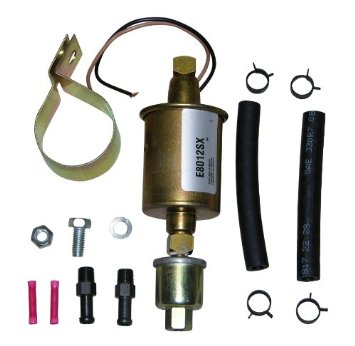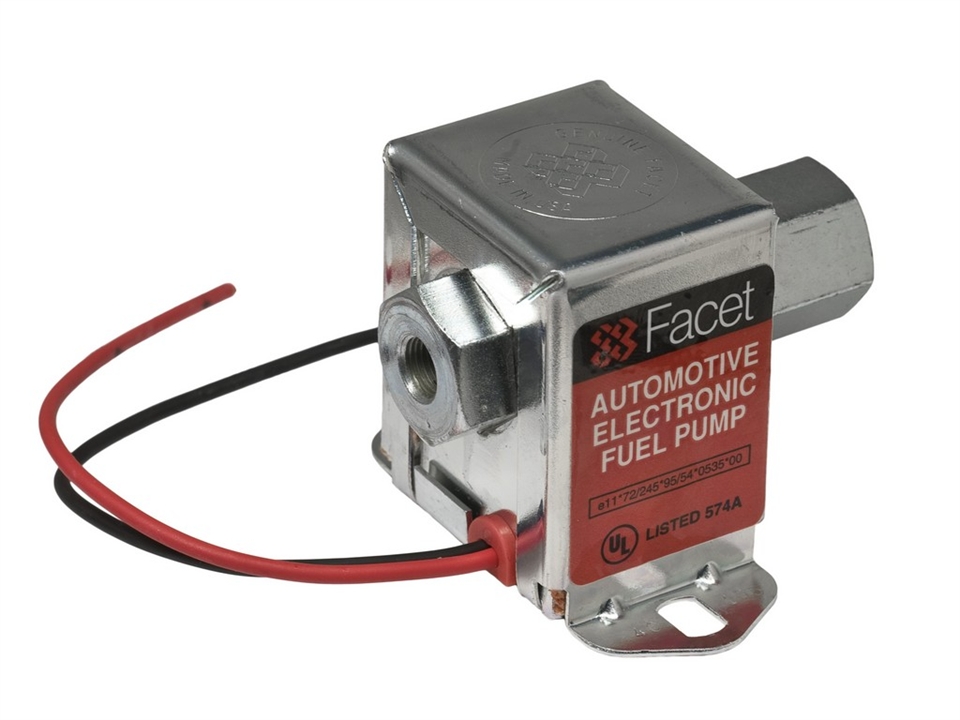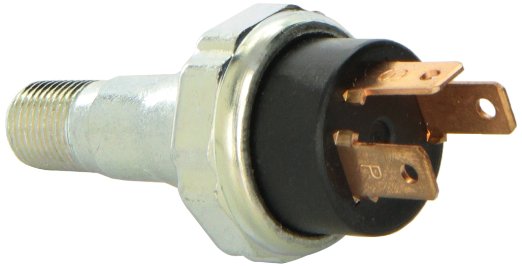An electric fuel pump is a nice addition to your Corvair. Stock mechanical pumps have always been plagued with problems. They can leak fuel into the engine compartment which will generally cause a fire, and, if the diaphragm fails, you end up with fuel in the crankcase which means an oil change along with a new pump, and pumps sometimes donít pump because the internal check valves are not functioning. On the other hand, the electric fuel pumps that are available today are extremely dependable, less expensive than a stock pump, and are in stock at almost any auto parts store if you do ever have to replace one.
The
electric fuel pump works best if it is mounted near the fuel tank. There
is plenty of room on the Corvair to mount the pump close to the fuel
tank outlet. Several pumps are available that will do the job. One is
the Carter P60504 which provides 4 psi and 30 gph (gallon per hour).
Another is the Airtex E8016S with 2.4 to 4.5 psi and 30 gph. The Facet
fuel pump is another choice the Corvair people use and it is available
in a wide variety of specs.


Here are a couple of examples of Airtex/Carter installations.
.jpg)
.jpg)
Here is an example of a Facet installation.

The
wiring becomes a very important issue. The pump can be wired so that it
runs whenever the ignition switch is on. Easy to do but maybe not the
greatest idea. What happens if you decide to leave the ignition switch
on with engine off for some reason, or what happens if youíre in a crash
and the engine stops but the ignition is still on. No too much good can
happen, thatís for sure.
There are several ways to provide safety when
the engine is not running but the ignition switch is on:
1) The use of an oil pressure switch is a good choice. One way to provide
safety is by using an Airtex OS-75 or a Standard PS-64 switch. These
switches have three connectors. One provides power the pump, one gets
power from the ignition switch, and one is connected to the starter
solenoid so the pump will run while the engine is cranking. The cost of
these switches is in the $12 to $15 range (2015).

2) If you have converted to an 10SI internally regulated alternator, the white wire on the alternator plug provides 12 volts only when the engine in running. A common Bosch-type 5-pin (or 4-pin) relay can be used and activated by this circuit which then provides power to the pump. The downside to this method is that if the car sits for a long period of time and the fuel evaporates from carburetor bowls there must be some way to prime the carburetors. This is easily done by inserting a momentary power button to run the pump for a few seconds before starting the engine. This method cost only a few bucks for a relay, etc.

3)
Another method is uses a fuel pump controller. Ray Stedman of American
Pi (american-pi.com) sells an
electronic controller that uses pulses from ignition coil (the same
signal that runs the tachometer) to determine if the engine is running
and thus decides whether to run the pump or not. The unit measures about
1-1/4Ē x 1-1/4Ē x 1-1/2 and costs about $45.
The method you choose is not as important as choosing a way to turn that fuel pump off if the engine should stall for whatever reason.
....

The Corvair vendors sell this nice plate that
fits inside the pump and provides a dependable fuel bypass that leaves a
stock appearing unit in the engine compartment. It repaleces the valve
body. The plate costs about $45 - $50 by the time you add shipping
(2015).
If you would rather make your own stock-looking bypass, it can be done
by disassembling an old pump and cutting
the center out of the section that houses the valves. Fashion a
piece of 1/4" copper tubing
into a loop that fits between the inlet and the outlet of the casting,
as shown, and solder it in place. It's a good idea to apply a liberal
coating of instant gas tank repair putty on top of the solder joints as an insurance policy
against any pinhole leaks.


Into the base of the fuel pump a small piece of sheet metal (about the
size of a dime) is secured in place with J-B Weld to cover the
fuel pump rod hole.
This will keep the engine oil out of the fuel pump.
.JPG)
It might be a good idea to cut away the diaphragm and remove the rod so
the aluminum casting can be used
as a spacer allowing the stock screws can be used for reassembly.
.JPG)
.JPG)
.JPG)